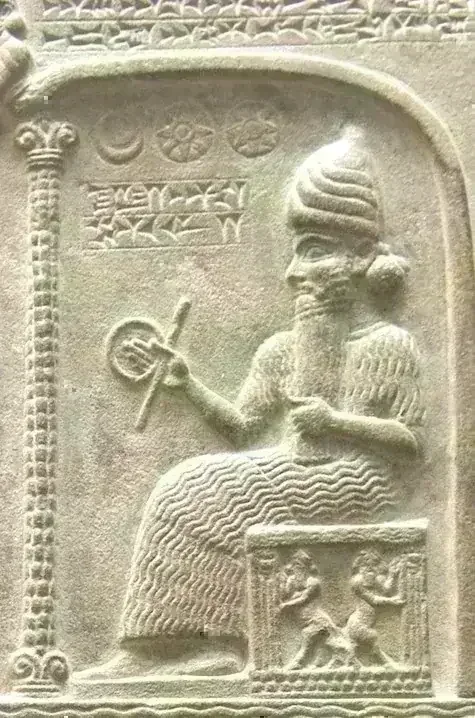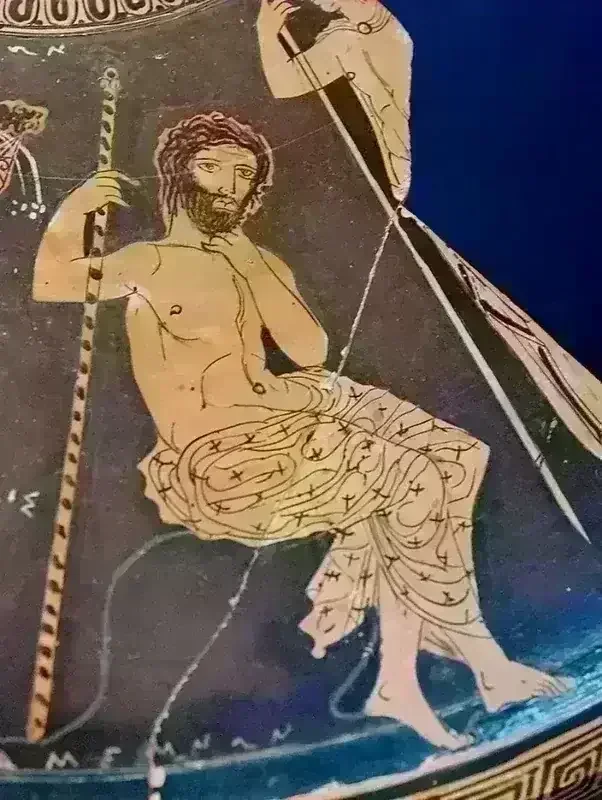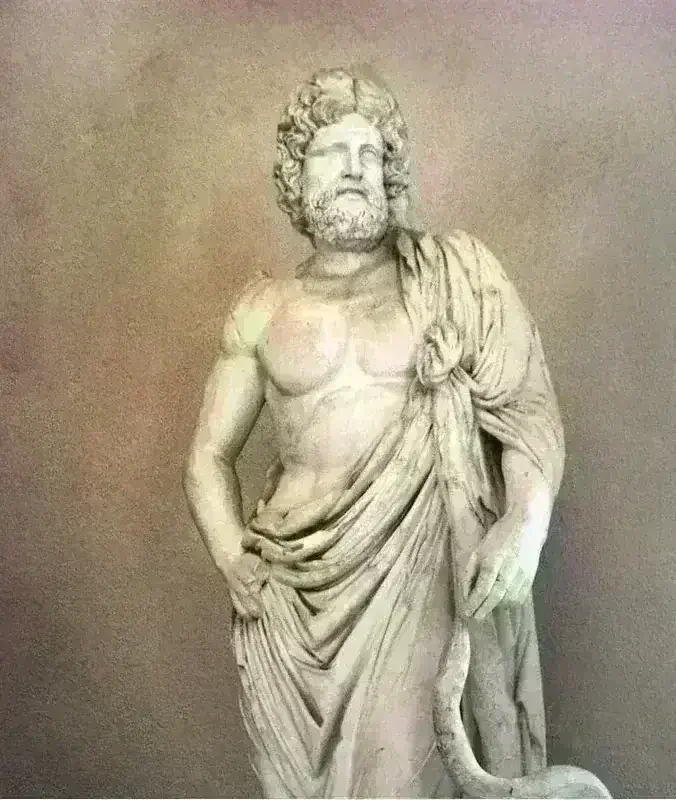Shamash

Shamash (Akkadian: šamaš), also known as Utu (Sumerian: dutu 𒀭𒌓, meaning "Sun"), was the ancient Mesopotamian sun god. Revered as an all-seeing deity, Shamash was believed to witness everything that occurred on Earth every day, making him a key figure in justice and the protection of travelers. As a divine judge, he was sometimes linked to the underworld. Shamash was also associated with divination, often working alongside the weather god Adad. While he was universally regarded as one of the foremost gods, he held particular significance in the cities of Sippar and Larsa.
Shamash was the son of the moon god Nanna (Sin) and his wife Ningal, with his twin sister being Inanna (Ishtar). Other goddesses, such as Manzat and Pinikir, were occasionally also considered his sisters. His wife was the dawn goddess Aya (Sherida), and texts often depict their daily reunions occurring on a mountain, where the sun was believed to set. Their children included Kittum, the embodiment of truth, dream deities like Mamu, and the god Ishum. Shamash’s name was also used to write the names of many other foreign solar deities, with a notable connection to the Hurrian solar god Shimige, who was sometimes linked to Aya as well.
Though no myths specifically centered on Shamash are known, he frequently appears as a companion to other deities in both Sumerian and Akkadian texts. For instance, in the story of Dumuzi’s death, he aids in protecting him from the galla demons who attempt to drag him to the underworld. In various versions of the Epic of Gilgamesh and earlier Gilgamesh myths, Shamash helps the hero defeat the monstrous Humbaba. In the myth Inanna and An, he assists his sister in acquiring the temple Eanna. Additionally, in How Grain Came to Sumer, Shamash is invoked to give counsel to the gods Ninazu and Ninmada.


